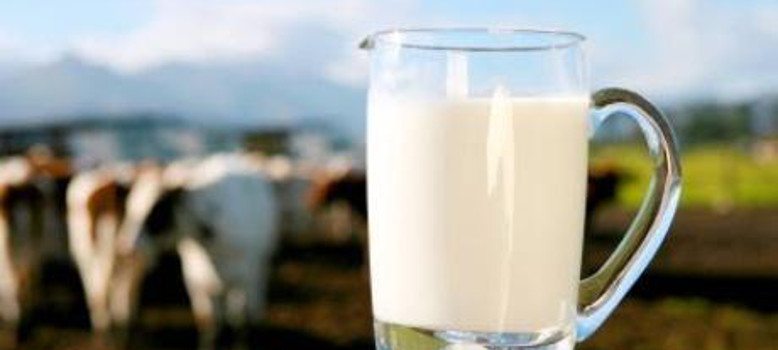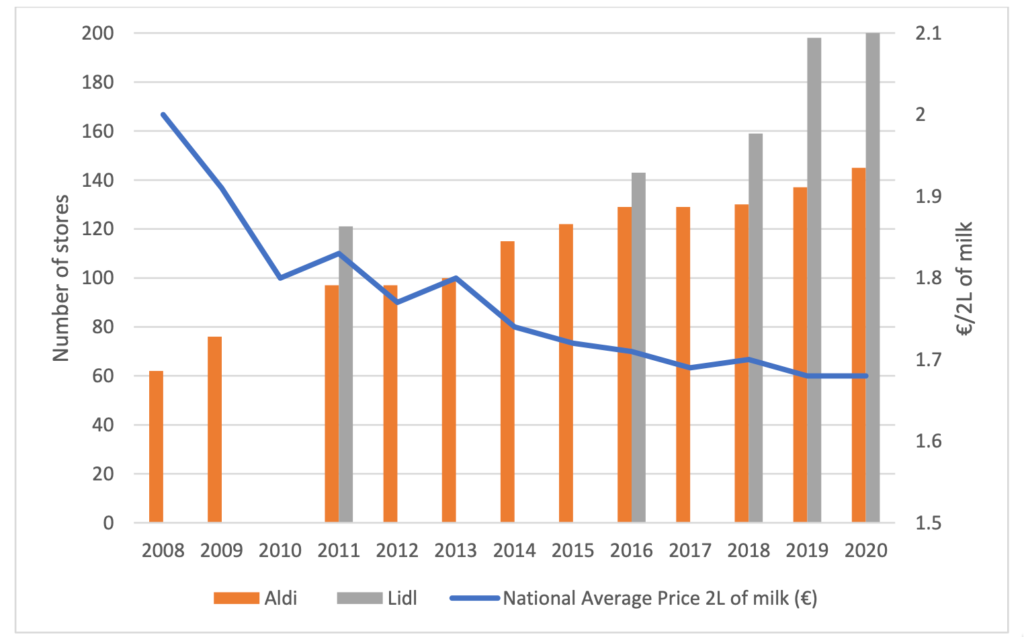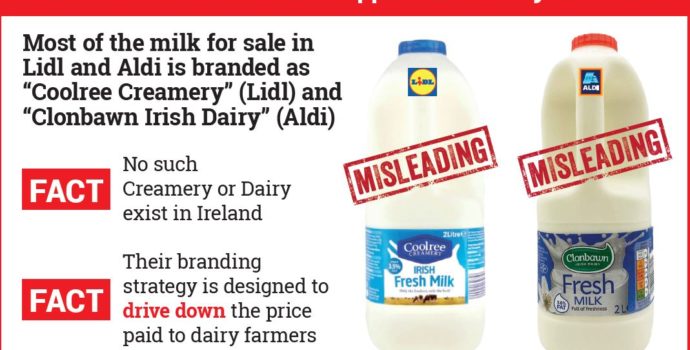
Over 10m litres of fresh milk are consumed in Ireland each week. That’s over 2L per head of population.
The rise of ‘own brand’ milk has played a major role in the exit of dairy farmers from fresh milk production. It now represents over 80% of all fresh milk sales.
Two litres of own brand milk typically sell at €1.49 and has been more or less static the past ten years. The policy of supermarkets is to promote their own brands at a reduced price.
As the buyers of large volumes of milk, they can insist on a reduced wholesale price, eroding the margin for the processor and primary producer.
This strategy is pursued aggressively by Aldi and Lidl. Neither carry branded milk such as Arrabawn, Champion, Avonmore or Connacht Gold. Instead, they offer only the fake ‘Coolree Creamery’ and ‘Clonbawn Irish Dairy’.
These dairies don’t exist and deliberately mislead the consumer into purchasing milk that appears local. As the number of Aldi and Lidl stores has grown to nearly 400, the retail price for two litres of milk has steadily declined.

82% of consumers want to see dairy farmers protected and supported for future generations (source: NDC).
If the price continues to remain static for producers, the sector will no longer be able to guarantee fresh milk in our stores, particularly in December and January.
To ensure sustainability of the sector, consumers should buy milk with the NDC logo. This is the only way of ensuring that farmers are rewarded fairly for their efforts.
Of c. 18,000 dairy farmers in Ireland, fewer than 10% produce milk for the fresh milk market. The vast bulk of farmers supplying milk for manufacturing to dairy products such as butter, cheese and infant formula.
The first herd calves in February/March and is milked through to November/December while the second herd calves in October/November and is milked through to August.
The second herd means consumers have fresh milk throughout Christmas and the winter months. However, running this second herd carries extra expense due to the requirement for extra housing and feed during the winter as grass growth stalls and weather conditions deteriorate.
The number of fresh milk producers in Ireland has fallen by 25% in the past decade.
As input prices increase and milk price remains static, farmers are unable to sustain the higher-cost milk production system required to supply fresh milk.

